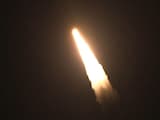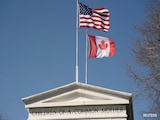The Kilauea volcano in Hawaii has started erupting after a brief pause, less than a month after its neighbour Mauna Loa stopped spilling lava from an earlier eruption, according to the officials at Hawaii Volcanoes National Park. Footage released by the park showed that Kilauea began erupting on January 5 inside Halemaumau crater at the volcano's summit caldera.
The summit of Kilauea is located far from populated areas, inside Hawaii Volcanoes National Park. The United States Geological Survey (USGS) increased the alert level for Kilauea earlier on Thursday as a result of indications that magma was flowing beneath the summit's surface and the volcano may erupt.
"HVO is lowering Kilauea's volcano alert level from WARNING to WATCH because the initial high effusion rates are declining, and no infrastructure is threatened. HVO is lowering Kilauea's aviation color code from RED to ORANGE because there is currently no threat of significant volcanic ash emission into the atmosphere outside of the hazardous closed area within Hawai'i Volcanoes National Park," the USGS stated in a report.
One of the most active volcanoes on the planet is Kilauea. When Mauna Loa, the largest volcano in the world, erupted for the first time in 38 years on November 27, Hawaii had two volcanoes spilling lava side by side for nearly two weeks starting that day. Interestingly, eruptions from both volcanoes ceased around the same time.
Hawaii's Kilauea volcano also erupted in April 2021 and it continued to do so until August. Magma began to drain from the volcano during this time and the caldera finally collapsed. The eruption caused the destruction of hundreds of homes and permanently affected the lives of thousands of residents.














